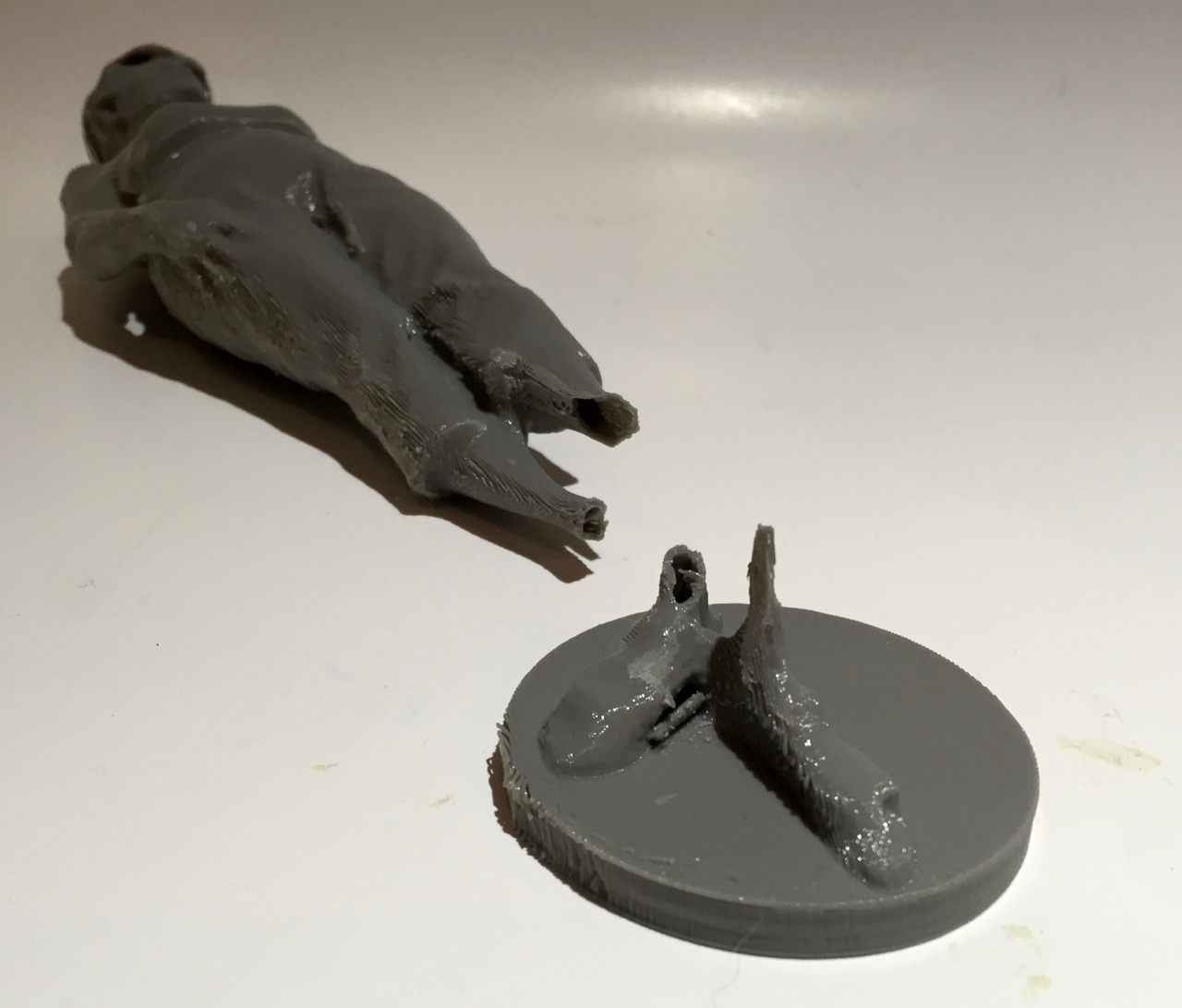
Often 3D printer operators seek machines capable of printing ever-more-detailed objects, with finer resolution. But sometimes that’s a problem.
While such 3D prints may be extremely detailed and match the required specifications, they are also often very fragile. The thinner the segment, the less strength it has, given the same material.
The fragility is evident not only when handling the finished object, but more importantly when it’s being 3D printed.
Some 3D printers make life very difficult for fragile 3D models, particularly when removing them from the printer.Consider these typical situations:
A delicate print has been completed on a plastic extrusion 3D printer, where the print sticks very strongly to the print bed. While some machines are designed to loosen the print upon cooling, other designs require effort to “crack” the print off the bed by a strong application of a metal scraper.
How many times have you printed something delicate, only to destroy it when it flies away when the scraper finally slices it off the bed? I’ve begun creating “soft landing areas” for flying prints to avoid smashed prints. Those are especially annoying if you’ve been printing for many hours, and then break the print seconds after it’s complete.
Another fragility scenario involves support materials. In a spindly component of a structure, removal of the support material can be very challenging as the model may be less strong than the support holding it up. Quite often I’ve had to re-print an object because I pulled off some of the model with a piece of support.
Yet another fragility scenario involves Stratasys’ Objet line of 3D printers, which use copious amounts of support material. If you’re not familiar with these machines, the standard method of removing the support material is to blast the jelly-like stuff off with a small water jet station. You can guess what happens when you have a very thin structure: it gets blown away with the support material!
The answer here is to strongly consider how your print will be treated after printing to ensure it is truly printable – printable meaning that you can successfully extricate it from the 3D printer and remove the support structures without major risk of breakage.

